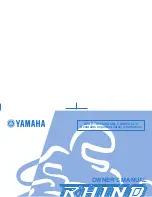
Safe handling of tippers
20
Safety
1
Unfavourable wind conditions
The risk of falling over increases
with the height to which the
loading bridge is raised at winds
above a strength of 5 Bft
(Beaufort scale = 35 km/h - small
deciduous trees start to sway)!
Check from which side the wind is
blowing before the tilting process and
tilt against the wind where possible.
Avoid lifting the lowing bridge fully up
when the side wind is strong.
Perform the tilting at fair speed.
Tipping at building sites
Sufficient distance must be kept
when tipping at fortified
excavation pits!
Maintain a distance of at least 1 m
from the excavation pit when tipping.
Tipping on slopes
A sufficient distance must be
maintained when tipping on
slopes!
Maintain a distance of at least 2 m
from the slope when tipping.
Ensure that the slope angle does not
exceed the following values:
- 45° on soft ground
- 60° on firm ground
- 80° on rock / rocky ground
Maintain a larger distance if you are
not sure.
Braking during tilting
The chassis must be able to
compensate fo the forces during
the tipping process.
The parking brake may not be activated
during the tipping process!
The operating brake may not be
continuously activated!
Check that the parking brake has
been released before the tipping
process.
Release the operating brake gently
and repeatedly - not suddenly - during
the tipping process.
Dragging bulk goods
Bulk goods that are difficult to
move from the cargo bed can be
dragged by a controlled
movement of the vehicle.
This process must be carried out
slowly and very carefully!
Very slowly drive forwards and gently
activate the operating brake - do not
stop suddenly.
Jacking up the air-suspension
A lowered chassis - supported
by a jack - provides more
stability for the vehicle.
The air-suspension should
always be lowered completely
where possible!
Use the lifting / lowering system to
lower the air-suspension completely
or switch on the automatic lowering
facility.
Summary of Contents for 10000 Series
Page 6: ...Contents 4 ...
Page 11: ...9 1 Safety ...
Page 28: ...Personal protective equipment rules prohibitions 26 Safety 1 ...
Page 29: ...27 2 General information ...
Page 39: ...37 3 Operation ...
Page 61: ...59 4 Operating the chassis ...
Page 102: ...100 Operating the chassis Warning tables optional 4 ...
Page 103: ...101 5 Operating the body ...
Page 144: ...5 Roll up tarpaulin optional 142 Operating the body ...
Page 145: ...143 6 Electrical system ...
Page 158: ...6 TIM iTAP 156 Electrical system ...
Page 159: ...157 7 Inspection care and maintenance ...
Page 218: ...7 Disposal 216 Inspection care and maintenance ...
Page 219: ...217 8 Troubleshooting ...
















































